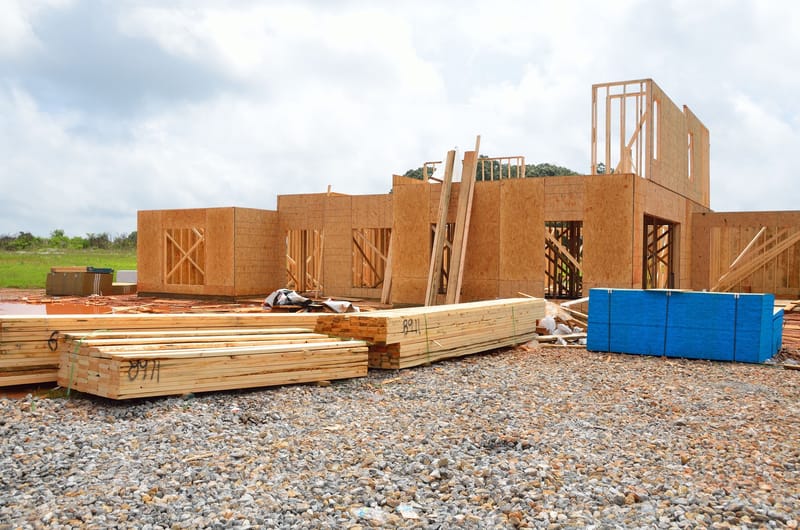Construction Loan

In New Zealand, many individuals aspire to build their dream homes. However, due to budget constraints or lack of understanding of the process, they often end up abandoning their plans. Some may not even be aware that they can apply for loans from banks to finance their construction costs. If you are preparing to build a house or undertake significant renovations, you may be interested in obtaining a construction mortgage loan.
What is a Construction Loan?
A construction loan is designed for individuals building a home or undertaking major renovations, providing funds for construction costs. Unlike standard home loans for purchasing existing homes, the structure of construction loans differs. The most common type is progressive drawdown, where the borrower and bank agree on the total construction cost and the loan amount is disbursed in stages throughout the construction process, rather than receiving a lump sum upfront. Interest is typically charged only on the amount drawn down, not the entire loan amount. In most cases, the interest rate during construction is variable, with the loan converting to a fixed rate after project completion.
How to Obtain a Construction Loan and the Process:
Obtaining approval for a construction loan involves a different process than applying for a standard loan to purchase an existing home. In addition to providing detailed information on your income, expenses, savings, and debts, you'll typically need to submit the following documents to the bank: Building Consent, Resource Consent, Fixed-price Contract, and any applicable insurance (such as Builder's Risk Insurance).
Compared to traditional lump-sum mortgages, construction loans are typically riskier and more costly due to the uncertainty of project timelines and potential cost overruns. Therefore, banks assess factors such as the total construction cost, plans, construction method, your savings, income, and the property's location when making loan decisions. They usually apply a percentage of cost overrun (10%-20%) when calculating the loan amount to control risks, which varies depending on the lender.
For example, applicants with a fixed-price construction contract may incur overruns of 10%-15%, while owner-builders or those supervising construction without a licensed builder may face higher risks and overruns of 15%-20%. Some lenders may only finance homes constructed by certified builders.
Banks typically calculate your loan-to-value ratio (LVR) based on the expected value of the property after construction. Therefore, before determining the final loan amount, the bank may require an assessment report from their designated property valuation platform to determine the property's expected value after completion and the total borrowing amount needed. Most banks can lend up to 90% of the total construction cost, meaning you'll need at least a 10% deposit plus contingency funds (considering potential material cost increases, etc.). Banks may also require further assessments and inspections during the construction project.
Once approved, construction loans are usually disbursed in stages at different construction milestones, with payments made directly to the builder or suppliers. For instance, if you're financing a $600,000 construction project for your primary residence and have a fixed-price construction contract, payments may be structured as follows:
- Foundation Concrete Stage: 20% ($120,000)
- Structural and Frame Stage: 25% ($150,000)
- Lock-up Stage: 25% ($150,000)
- Fitout / Fixing Stages: 25% ($150,000)
- Practical Completion: 5% ($30,000)
Your loan will be progressively drawn down as invoices are provided by the builder, typically with interest charged only on the amount drawn down. It's essential to note that banks usually retain a 5% final payment until the project is fully completed, and a Code Compliance Certificate (CCC) is issued. Additionally, a completion certificate from a valuer may be required to access the final loan amount. At this stage, your loan can be converted from a variable to a fixed interest rate.
Finding the Right Construction Loan
Once you're satisfied with your construction design, builder, and contract, you'll need to secure financing accurately. To minimize costs, consider the following steps:
Compare all lenders in the market – Your bank may not offer the best construction loan. Don't be hesitant to contact all banks. Building a house is expensive, and saving as much as possible on your mortgage is a good starting point. For example, mainstream banks offer construction loan products like ASB's "Back My Build" and ANZ's "Blueprint to Build," providing discounted variable rates during construction, which can reduce your overall mortgage costs. Westpac offers no special rates currently but has a mortgage cashback offer, providing 1.5% of the loan amount up to a cap of $15,000. BNZ has not released more details about its construction loan products.
Consider using a mortgage broker – Building a house can be stressful; working with a professional broker specialized in construction loans will provide insights into the market and potentially better deals than going directly to a bank. Even a 0.05% or 0.10% difference can help reduce borrowing costs.
Conduct a thorough financial check before signing any contracts – Once construction starts, you face significant risks. With rising land prices, labor shortages, and material price increases due to global supply constraints, construction costs are soaring. Building materials have increased by 20% to 25% in the past five years, with experts predicting continued cost increases in the foreseeable future. This means your budget should be higher than anticipated. You need enough money to cover all planned and unplanned expenses.
Building a house and buying an existing one both have advantages and disadvantages. However, working with a GSL's adviser to find the right solutions can help you navigate this process smoothly.